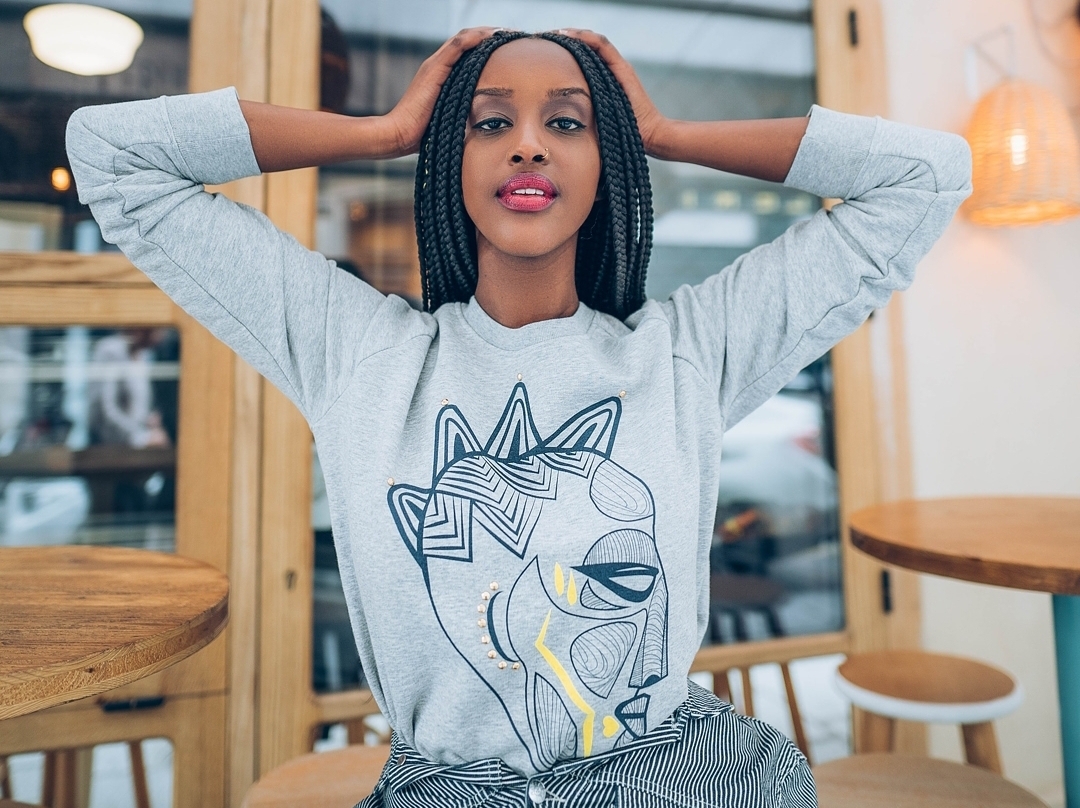Comprehending Garments: The Significance of Material Choices in Your Wardrobe
The selection of material in apparel plays an essential role in both visual appeals and functionality. Various products supply differing levels of durability, breathability, and comfort, straight influencing the wearer's experience. Recognizing these nuances can enhance one's wardrobe markedly. Numerous overlook just how these selections can impact not simply personal style, but likewise sustainability. What material decisions could redefine your closet and straighten it with both style and obligation?
The Function of Textile in Style and Performance

Usual Fabric Kinds and Their Characteristics
When choosing apparel, recognizing the attributes of typical fabric types is essential for making notified selections. Cotton, a widely-used all-natural fiber, is known for its flexibility, breathability, and softness, making it suitable for sportswear and daily garments. Linen, another all-natural option, boasts outstanding moisture-wicking buildings and a distinctive structure, ideal for cozy climates.Wool, often favored for its heat and toughness, differs in excellence; merino woollen is soft versus the skin, while coarser types are made use of for outerwear. Artificial textiles like polyester and nylon use durability and resistance to wrinkles, making them prominent for activewear and travel garments. Blends, which combine natural and artificial fibers, can enhance functionality while keeping comfort. By recognizing these fabric characteristics, individuals can select garments that lines up with their way of living and aesthetic choices.
Breathability and Comfort: Selecting the Right Fabrics for Different Climates
Picking the right materials for various environments can substantially enhance comfort and overall wearability. Breathable products are vital in hot climates, as they permit air blood circulation and wetness evaporation. Fabrics such as cotton, linen, and moisture-wicking synthetics effectively attract sweat away from the body, keeping the user cool and dry. Alternatively, in colder environments, thicker fabrics like wool or fleece supply insulation while keeping breathability, ensuring warmth without overheating.Additionally, the choice of fabric weight plays a vital duty; lightweight materials are more effective for summer season, whereas larger alternatives are fit for winter months wear. Recognizing the special residential or commercial properties of each material makes it possible for people to dress appropriately for differing weather condition problems. Inevitably, picking comfy and breathable materials tailored to certain climates can considerably improve daily comfort and enhance the overall experience of wearing clothing.
Durability and Treatment: How Textile Impacts Durability of Your Wardrobe
Choosing the ideal products can significantly influence the longevity and treatment needs of a closet. Fabrics such as cotton and polyester are understood for their strength and convenience of maintenance, making them ideal for daily wear. On the other hand, fragile products like silk and lace call for even more careful handling and specialized cleaning approaches, which can boost the time and initiative needed for care. Branded Clothing.Durability is additionally affected by the fabric's weave and surface; tightly woven textiles often tend to resist damage better than loosely woven options. Additionally, artificial blends often supply improved durability, incorporating the most effective high qualities of numerous fibers.Understanding the care directions for each textile is vital, as improper drying or cleaning can result in premature wear. Inevitably, selecting sturdy materials can bring about a longer-lasting wardrobe, minimizing the frequency of replacements and adding to a much more sustainable style choice
The Effect of Fabric on Fit and Silhouette

Lasting Material Options: Making Eco-Friendly Choices
The effect of fabric prolongs beyond fit and shape to encompass environmental elements, triggering a growing passion in sustainable textile options. Green materials, such as natural cotton, hemp, and Tencel, are obtaining grip amongst customers that focus on sustainability in their closets. These materials are typically produced with fewer chemicals and water, minimizing their ecological footprint.Additionally, recycled fabrics, made from post-consumer waste, provide an innovative solution to the textile sector's contamination trouble. Brands increasingly welcome transparency in their sourcing methods, enabling customers to make informed decisions regarding their purchases.Choosing sustainable fabrics not only supports moral techniques yet likewise motivates the style industry to adopt even more responsible production approaches. As understanding of environmental problems rises, individuals are prompted to reflect on the lasting influence of their textile choices, fostering a movement in the direction of a more eco mindful and lasting strategy to fashion.
Elevating Design: Just How Textile Can Change an Attire
While numerous might concentrate on shade and cut when selecting a clothing, the option of material plays a crucial role in raising style and improving general appearance. Different materials communicate distinct moods and messages; for example, silk shows deluxe and refinement, while denim uses a casual, loosened up ambiance. The appearance and drape of a textile can considerably alter the silhouette, with structured materials supplying a refined appearance and softer ones creating an extra fluid, loosened up aesthetic.Moreover, the weight of the fabric influences wearability across seasons. Lightweight fabrics like linen and cotton are ideal for summer, while heavier materials such as wool and velvet give heat and elegance in chillier months. Understanding material residential properties, such as breathability and stretch, additionally equips people to make educated options that boost comfort without endangering design. Inevitably, the right textile can change a clothing from ordinary to you can find out more extraordinary, making it an important consideration in any kind of wardrobe.
Often Asked Inquiries
How Do I Identify the Fabric Content of My Clothes?
To identify material material, one can take a look at care tags, conduct shed tests for fiber recognition, or get in touch with textile examples. These approaches aid distinguish products, making certain educated choices for apparel treatment and maintenance in daily wear.
Can Material Option Affect My State Of Mind or Self-confidence?
Material selection can greatly affect an individual's state of mind and self-confidence. Branded Clothing. Specific materials may stimulate sensations of comfort or elegance, while others can feel uncomplimentary or restrictive, ultimately influencing self-perception and psychological well-being throughout the day
What Fabrics Are Finest for Sensitive Skin?
For people with sensitive skin, all-natural fabrics like bamboo, bed linen, and cotton are typically advised. These materials are breathable, hypoallergenic, and much less likely to trigger inflammation, making them appropriate choices for convenience and skin wellness.
Just how Do I Properly Wash and Look After Various Fabrics?
To effectively clean and care for various textiles, one should consider each material's details requirements, including temperature level settings, cleaning agents, and drying out approaches, making certain longevity and maintaining the textile's initial qualities for optimal usage.
Are There Particular Fabrics for Athletic or Efficiency Put On?
Athletic or performance wear usually makes use of textiles such as spandex, nylon, and polyester. These products are created for moisture-wicking, breathability, and versatility, improving motion and convenience throughout exercises while providing durability and assistance. Conversely, in colder climates, thicker materials like woollen or fleece supply insulation while keeping breathability, making certain heat without overheating.Additionally, the choice of material weight plays a crucial role; light-weight fabrics are more effective for summer season, whereas heavier choices are matched for wintertime Visit This Link wear. In comparison, delicate products like silk and shoelace require more careful handling and specialized cleansing techniques, which can enhance the time and effort needed for care.Durability is likewise affected by the material's weave and finish; snugly woven textiles often tend to withstand wear and tear better than loosely woven options. In contrast, stiff materials can limit motion yet provide a traditional, refined look.Moreover, the density and structure of the fabric can influence the visual understanding of body form. The impact of material prolongs beyond fit and silhouette to incorporate environmental aspects, motivating an expanding passion in lasting textile choices. The structure and drape of a textile can substantially modify the shape, with organized fabrics providing a sleek look and softer ones creating a much more fluid, unwinded aesthetic.Moreover, the weight of the textile influences wearability across periods.